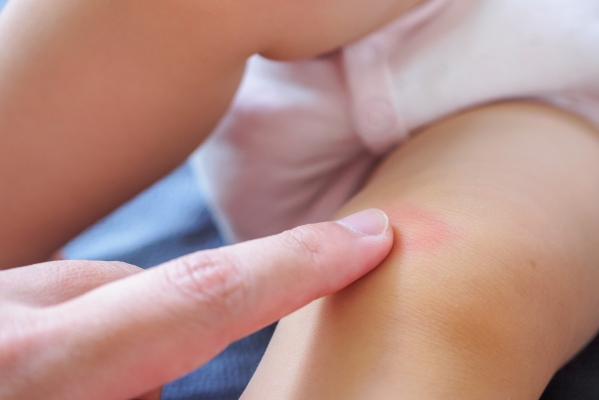What is Vitiligo?
Vitiligo is a common skin disorder in which there is a problem with the pigmentation of the skin. It has characteristic well-defined white patches due to the loss of melanocytes in the skin. Melanocytes are cells responsible for the production of the dark pigment (melanin) giving skin its colour. The lesions may occur anywhere on the body, either localized to a particular body part or coalescing to form large depigmented areas. Due to the remarkable colour difference between normal skin and affected skin, it is more disfiguring for black people compared to white people.
Vitiligo affects around 1-2% of the world’s population. Most of the cases are related to similar ones within the same family. Females are more commonly affected compared to males. It also can occur at any age even if the onset is more common among people aged between 10 to 30 years. Despite being more remarkable in dark skinned people, it does not have a racial or ethnic predilection.
What are the causes of vitiligo?
The exact cause of vitiligo is unknown. Some people have reported noticing the onset of the skin condition following triggering factors such as physical injury, sunburn, stress or pregnancy. However, no studies have proven the link between these factors and vitiligo. Some studies, however, have shown that people with vitiligo are more likely to have a coexisting autoimmune disease, suggesting an autoimmune component in the disease. Vitiligo can also be inherited, that is, if you have close family members with the disease, you are also at risk of having it.

What are the symptoms of vitiligo?
Vitiligo is a skin condition that can easily be recognised due to its characteristic appearance. The main symptom is the presence of well demarcated white skin patches. There are different types of vitiligo depending on the site affected. The extent of the skin involvement will also vary from person to person. Vitiligo can be categorised into “generalized vitiligo”, “acrofacial vitiligo” or “segmental vitiligo”.
In generalized vitiligo, both the left and right side of the body is affected in the same pattern. It usually affects:
- Body parts that are far from the centre of the body such as your fingers, toes, ears and legs
- Skin around body openings such as the mouth, eyes and nose
- Skin that covers joints (stretchy skin) such as on the elbows, knees or finger joints
- Skin that gets rubbed often or injured
Acrofacial vitiligo is most commonly present on body parts that are far away from the centre of the body such as fingers, toes and ears as well as skin around body openings such as mouth, eyes and nose.
Segmental vitiligo, on the other hand, affects only one side of the body in patches.
In all types of vitiligo, whitening of your hair, eyelashes, eyebrows and facial hair can also be present.

Making a diagnosis
Most of the time, the diagnosis of vitiligo is made only by clinical examination as the skin findings have a characteristic appearance. Your doctor will however start by asking you a set of questions to know about:
- Your age when you first started having the skin findings
- Any events which may have preceded the onset
- Any other symptoms associated with it
- The progress of the skin findings
- Any noticeable changes over the skin patches
- The presence of any other medical conditions
- Whether you are on any medications or treatment
- Whether you have been exposed to any chemicals
- Whether you have family members with the same skin condition or autoimmune diseases
If you are suspected to have any coexisting autoimmune diseases, your doctor may request some blood tests to confirm the presence of a disease.
A special lamp, also known as a Wood’s lamp may also be used to help in making the diagnosis of vitiligo. In rare cases where the diagnosis is doubtful, a skin biopsy may be done to confirm the diagnosis. This involves taking a sample of skin affected for analysis under microscope.
Treatment of vitiligo
When initiating the treatment for vitiligo, your doctor will first discuss about the goals of the treatment depending on each case. This will depend on the patient’s age, skin type, extent, location and degree of skin involvement. The impact on the affected individual’s quality of life should also be taken into consideration. The limitations of treatment will also be made clear to you as vitiligo can sometimes be difficult to treat.

Treatment of vitiligo is based on increasing the pigmentation in the affected skin. Some treatment options include:
- Steroid medications: Corticosteroids can be applied to hypopigmented skin in order to increase pigmentation. They are available in the form of ointments, creams and gels. Some examples include fluticasone or mometasone. This is usually preferred in early stages of vitiligo and take some time to be show results. Some side effects that may be associated with the use of topical steroids include thinning of skin or the appearance of lines on the skin.
- Calcineurin inhibitors: These are medications that work by affecting your immune system. They are available in the form of ointments or creams. Some examples include pimecrolimus and tacrolimus.
- Phototherapy: In this treatment modality, your skin is exposed to ultraviolet (UV) light using special apparatuses. This can usually be done in a doctor’s office. This can stop or slow the progress of the skin condition and can be used in combination with other medications. This may have to be done 2-3 times per week. Possible side effects include redness, burning or itching of your skin.
Your doctor will know best which treatment regimen will suit you the most. The key is patience as treatment of vitiligo may last long before any improvement is seen.
The following are general advice for you if you have vitiligo:
- Avoid getting out in the sun between 10 AM to 4 PM to avoid a sunburn
- Stay under an umbrella or a shady spot
- Always wear sunscreen (preferably higher than SPF 30) if you are going to be exposed to sunlight
- Wear clothes that covers the affected skin as well as hats

Complications
The main complication of vitiligo is social or psychological distress. This is because it is a skin disease that is remarkable and has long been associated with stigma. People with vitiligo will tend to isolate themselves and have a low self-esteem. However, it is advised to seek medical help or talk to someone if you feel that the disease is causing too much distress to you.
Prognosis of vitiligo
Vitiligo is a chronic disease which is associated with an unpredictable course. If your vitiligo has started early in life, it is usually associated with a greater extent of skin involvement. In some people, spontaneous repigmentation may occur in affected skin. However, in most people, the disease spread to involve more skin area.
Source:
Grimes, P., 2017. Vitiligo: Pathogenesis, Clinical Features, And Diagnosis.
Grimes, P., 2020. Vitiligo: Management And Prognosis.









